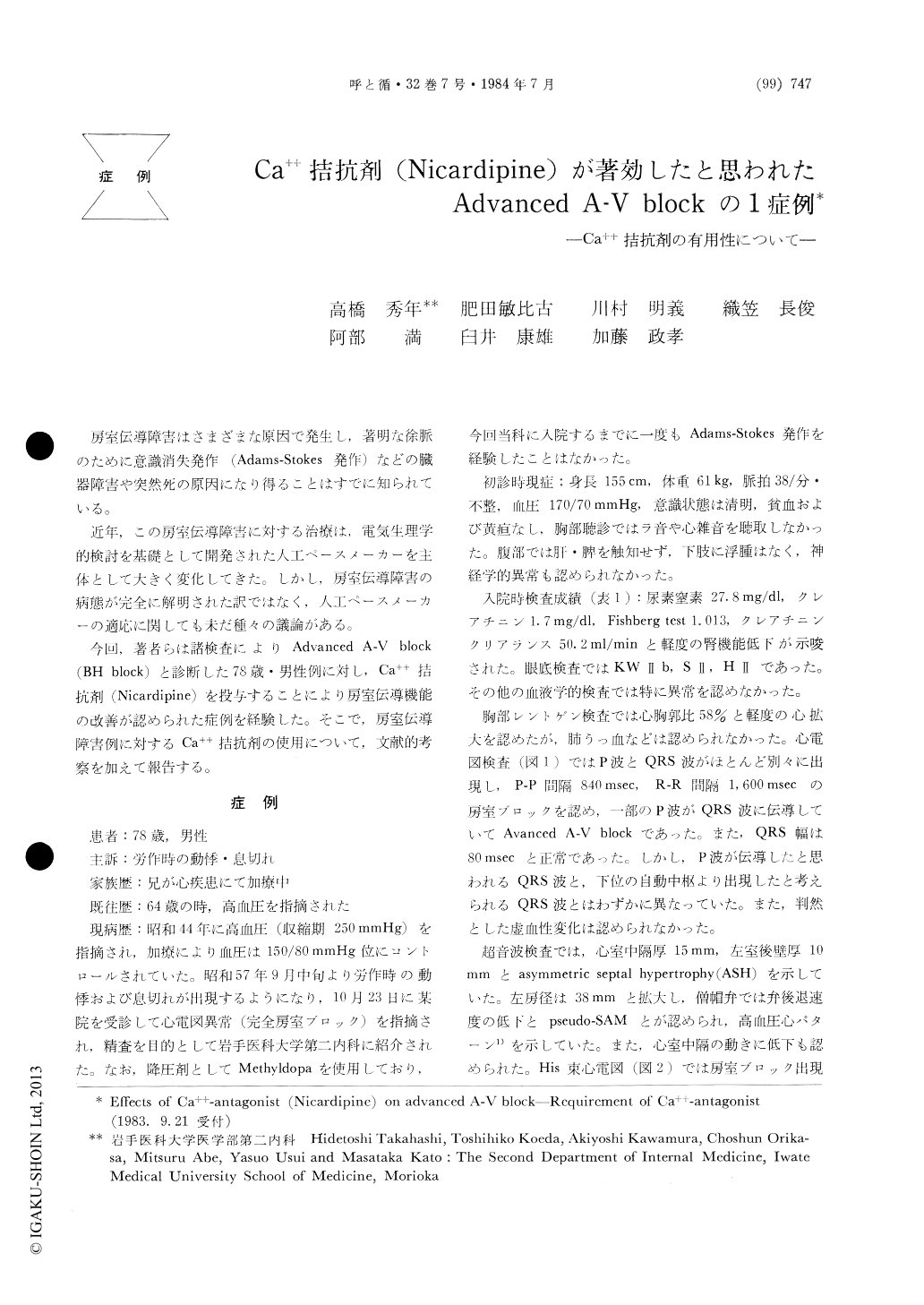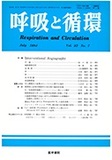Japanese
English
- 有料閲覧
- Abstract 文献概要
- 1ページ目 Look Inside
房室伝導障害はさまざまな原因で発生し,著明な徐脈のために意識消失発作(Adams-Stokes発作)などの臓器障害や突然死の原因になり得ることはすでに知られている。
近年,この房室伝導障害に対する治療は,電気生理学的検討を基礎として開発された人工ペースメーカーを主体として大きく変化してきた。しかし,房室伝導障害の病態が完全に解明された訳ではなく,人工ペースメーカーの適応に関しても未だ種々の議論がある。
Apatient with advanced A-V block (mixed typeof B-H and H-V block) is reported here becauseof its rarity. Administration of a Ca++ antagonist (Nicardipine) improved apparently the atrioven-tricular conduction disturbance. This patient is a 78 year old male presenting with the chief complaint of exertional palpitation and dyspnea, he had been treated for hypertension since 1969. The palpita-tion and clyspnea had appeared around September 1982. On consulting a clinic, complete atrioven-tricular heart block was discovered and the patient was admitted to the Second Department of Internal Medicine, Iwate Medical University School of Medicine for detailed examination. Adams-Stokes attacks had not been experienced until the current admission. His general condition was good but the pulse rate was 38/minute and irregular. Neither rales nor cardiac murmur were detected on chest examination. Chest X-ray revealed mild cardio-megaly with a cardiothoracic ratio of 58%. ECG revealed a P-P interval of 840 msec and a R-R interval of 1600 msec with atrioventricular dis-sociation. Sinus rhythm was also seen in some part. His bundle ECG revealed an A-H interval of 100 msec, a B-H interval of 30 msec, and a H-V interval of 60 msec, with a mild prolognation of the a B-H and H-V intervals. On high atrial stimulation, 2:1 conduction appeared on induction of the left atrial rate of 70/min. The sinus node recovery time was 1320 msec al the maximum. Diagnosis of ad-vanced A-V block was accordingly made. Sixty mg of Nicardipine was given as treatment with the intent of inducing minimal disturbance of conduction while lowering the blood pressure and improving the ischemia. As a result, sinus rhythm became predominant from the 4th day of administration on. The follwing tests were conducted at this stage in order to evaluate the effect of Nicardipine : 1) The drug was administered on and off re-peatedly with 24 hour monitoring. 2) On the disappearance of the disturbance of the atrioventricular conduction, an exercise loading ECG, atropine loading test and His bundle ECG were perfomed. According to these results, Nicardipine appeared to be effective in this patient. There appeared a disturbance of atrioventricular conduction in response to discontinuation of Nicardipine administration. Improvement occurred on readministration, along with improved findings in the His bundle ECG. Careful observation of the clinical course appears to be necessary because of the possibility of reappearance of disturbances of the atrioventricular defect.

Copyright © 1984, Igaku-Shoin Ltd. All rights reserved.


